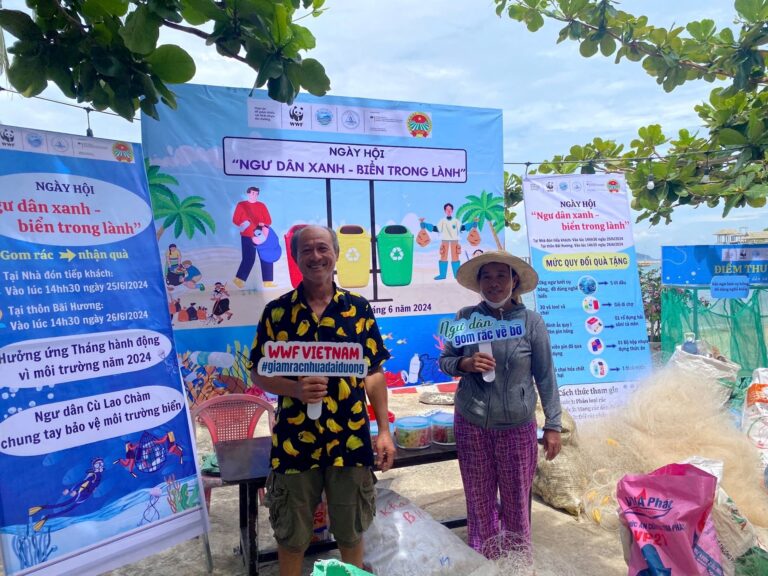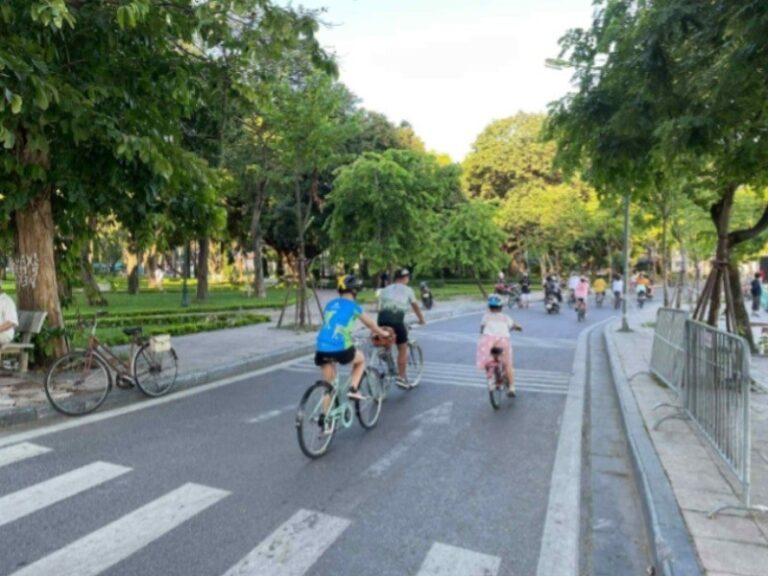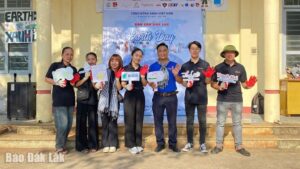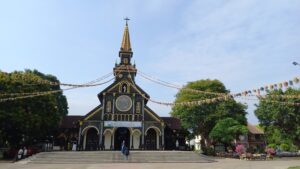Moc Chau is always inspiring to a nature-lover like me all year-round.
Less than a 4-hour drive from Ha Noi, the lush highlands offers a fresh atmosphere and an escape from the hustle and bustle. Natural forests, orchids and gardens cared for by local farmers act as green lungs for the small town.
Ethnic groups with strong identities bring soul to the land.
In Vat village in Muong Sang Commune of Moc Chau District, one can experience local nature and culture.
The most impressive scenery to visitors may be the waterfalls in the middle of the pristine forest.
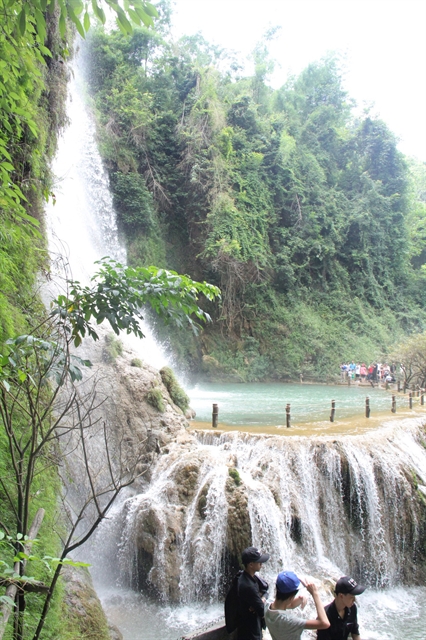
Dai Yem Waterfalls is warm in winter and cool in summer. — VNS Photo Nam Nguyen
The Vat Waterfalls, also known as Dai Yem Waterfalls, have initial two streams running from caves named Bo Co Lam and Bo Ta Chau. The village hosts hundreds of Thai ethnic people, and is one of the oldest native villages in the area.
The Vat stream runs from the karst mountain to the waterfalls and merges with Bo Sap stream, which originates from Bo Sap Village near the Viet Nam and Laos border.
There are thousands of uniquely shaped stones along the bed of Bo Sap stream. During the rainy season from April to September, the 70m-wide waterfalls run vigorously.
The second waterfall, located 150m away from the bigger one, nearer to the foot of the mountain, is just 50m in height yet is covered with plants. From the smaller waterfall, one can see wild orchids blooming on nearby hills or lush plum trees.
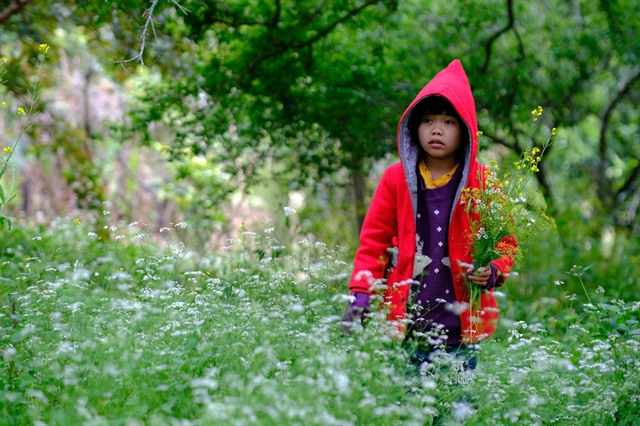
A lush garden in the village. — VNS Photo Nam Nguyen
Locals said the streams are warm in winter and cool in summer.
“That’s why visitors should bathe or even wade in the water when arriving in the area,” said resident Ha Thi Dinh.
Unique culture
By the streams, Vat village has become more beautiful recently with 15 big houses on stilts acting as homestays for guests.
Roads in the village have been built while private houses have been decorated. Locals are also more open to tourists.
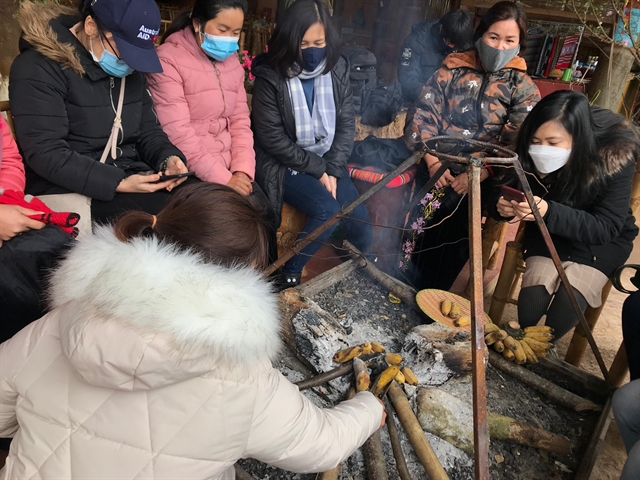
Visitors gather around a fire. — VNS Photo Le Huong
Local gardens of vegetables, plums, oranges, mangoes and strawberries offer a farming experience to tourists, as well as bring in incomes for residents.
Some 50 households have joined a community tourism project while many take part in art performances, making handicrafts, tour guides and providing food for guests.
“The community tourism has changed our lives,” Ha Van Thuy, owner of Hoa Moc Mien Homestay, told Viet Nam News. “We have a stable income from tourism besides existing agriculture products.”
Thuy said before the pandemic, his house-on-stilts received some 1,000 visitors each year and brought in some VND900 million (US$39,000) while his income from agriculture products was just VND40 million per year.
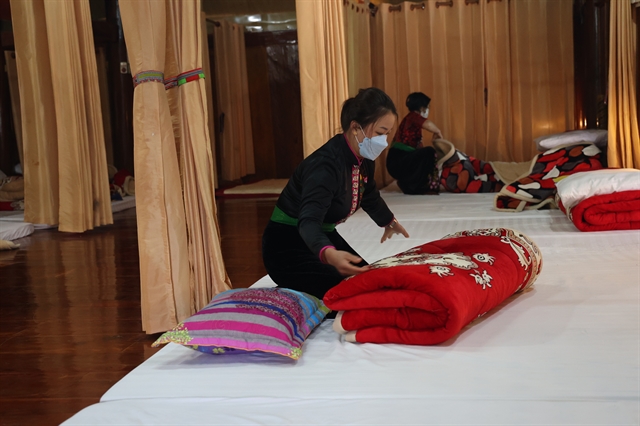
Inside a local homestay. — VNS Photo Nam Nguyen
Thuy said tourists can trek up the mountain and wade in the streams, as well as walk through fields of flowers and orchards.
Local homestays offer traditional Thai dishes like com lam (steamed sticky rice in bamboo pipes), baked fish, grilled chicken, and soup of pork with sour leaves.
“At night, visitors can watch folk art shows, sing and dance with locals,” he said.
Le Ban Mai, from Ha Noi, said she has often visited the village.
“I can see obvious changes here,” she said. “Locals are more professional in receiving guests. My family members of various ages can have fun here. My children pick strawberries. Teenagers and adults trek around and take photos. We really enjoy the atmosphere, the food and scenery here.
“It’s also not far from Ha Noi. We can drive here at the weekend with some other couples.”
Mai said the houses on stilts have modern facilities for guesses, most of whom are city dwellers.
“The common room is convenient and clean,” she said. “Our families can share the same room together, which is lots of fun for children.
Nguyen Van Luc, her husband, appreciates local culture, which his children can learn about.
“In Vat village, my children can have a close look at local life,” he said. “Such a trip is worth many times more than lessons in class.”
He said once they had an opportunity to see a wedding of Thai people.
“My daughter liked it a lot as she saw the bride and groom dressed differently than the ones she saw in cities,” he said.
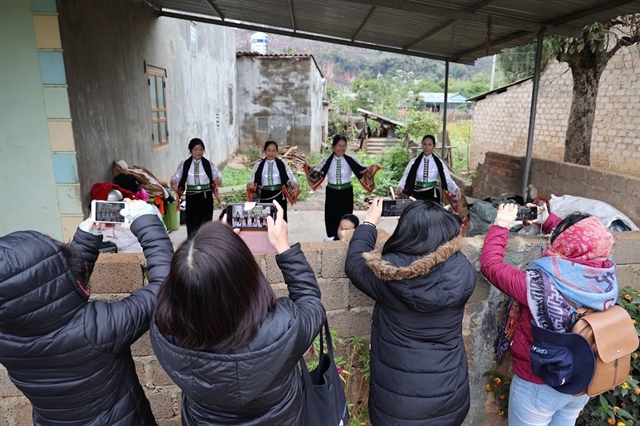
Visitors take photos of local women practising dances and songs. — VNS Photo Le Huong
Luc said he prefers Thai people here to keep their identity rather than following the Kinh majority.
“Once they preserve their special features, they can attract guests,” he said.
Dinh Thi Huong, head of the Culture and Information Department of Moc Chau District, said the district will encourage locals in more villages to host homestay services.
At present, three villages of the Thai ethnic group, and one village of the Mong ethnic group offer such services.
“Community tourism models have enhanced local women’s skills a lot,” she said. “They get more and more self-confident, earn more money to master their family life. They have no longer depend on men in all tasks.”
Local authorities have co-ordinated with some NGOs to provide necessary skills for local people so that they can improve their lives thanks to income from tourism.
The district aims to become a National Tourism Site by 2025
Le Huong


